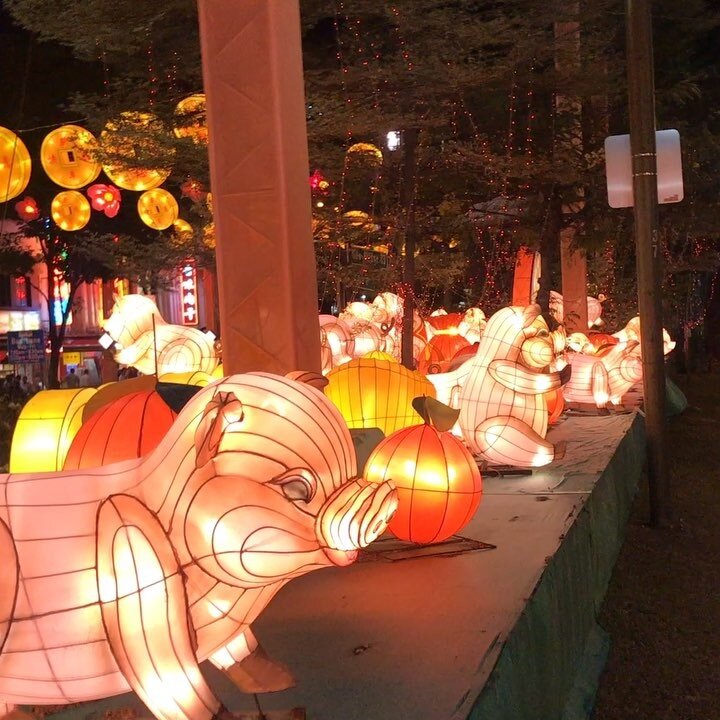The Year of the PIG – Chinese New Year in Singapore
Introduction
Chinese New Year, also known as Lunar New Year or Spring Festival, marks the beginning of a new lunar year in the traditional Chinese calendar. It is one of the most significant and widely celebrated festivals in China and among overseas Chinese communities worldwide. The celebration is typically observed over a period of 15 days, starting on the first day of the new year and culminating with the Lantern Festival on the 15th day.
In 2019, Chinese New Year falls on February 5th and marks the start of The Year of the Pig. According to Chinese astrology, each zodiac animal has its own unique traits and characteristics that are believed to influence people born under that sign.
The pig is considered a symbol of wealth, prosperity, good fortune, honesty and generosity. In Chinese culture, people born in the year of the pig are said to be diligent, compassionate and optimistic.

Explanation of Chinese New Year
Chinese New Year has been celebrated for over 4,000 years and has deep roots in traditional Chinese culture. It is believed to have originated from mythological tales about a mythical beast named Nian who would come out of hiding every spring to attack villages and eat people’s crops, livestock or even children.
To protect themselves from Nian’s wrathful attacks during each spring season, villagers would light firecrackers outside their homes for three days straight which they believed would drive Nian away because he was afraid of loud noises. Over time this practice evolved into what we now know as Chinese New Year; a time for families to reunite after long periods apart during work or school obligations; paying respects to ancestors; cleaning households; decorating with red lanterns symbolizing good luck; wearing new clothes symbolizing renewal; preparing symbolic foods such as dumplings (wealth and prosperity) and fish (abundance); giving out red envelopes filled with money to children, which is believed to promote good fortune; and lighting fireworks or firecrackers once again as a way of warding off evil spirits.
Singapore’s celebration of Chinese New Year
Singapore has a large Chinese population, and Chinese New Year is one of the most important festivals in the country. Leading up to the festival, shops are decorated with red banners and lanterns, massive events are organized around the city for locals and tourists alike. Major malls like Marina Bay Sands host lion dance performances, while Chinatown becomes a focal point of festivities with street bazaars selling traditional food like pineapple tarts, bak kwa (barbecued meat), and mandarin oranges – all believed to bring good luck.
The River Hongbao festival at Marina Bay attracts thousands of visitors annually for its impressive lantern displays, cultural performances from China’s various provinces as well as Singapore’s diverse ethnic groups. Additionally, visitors can also witness Chingay Parade which showcases a multicultural street parade of performers from different demographic backgrounds.
History and Traditions
Origins of Chinese New Year
Chinese New Year, also known as Spring Festival, is one of the most important festivals celebrated by Chinese all over the world. The festival dates back to over 4,000 years and has its roots in ancient Chinese agrarian society. In those times, the festival marked the end of winter and the start of spring – a time for new beginnings and rejuvenation.
The traditional lunar calendar was used to mark time, which is why Chinese New Year falls on a different date every year. Over time, several legends have arisen around how the festival started.
One popular legend has it that there was a monster named Nian who would come down from the mountains and destroy crops and villages during winter. People then discovered that Nian was afraid of loud noises and bright colors; hence they started using loud firecrackers and decorating their homes in bright colors during the new year period to scare off Nian.
The importance of the pig in Chinese culture
Each year in Chinese astrology is represented by one of twelve animals, collectively known as zodiac signs. In 2019, we celebrate the Year of Pig – an animal that represents wealth, fortune and prosperity. Pigs are considered auspicious animals because they are hardworking yet gentle creatures with chubby cheeks symbolizing good fortune.
In addition to its status as a zodiac sign, pigs play an important role in many traditional Chinese customs surrounding food as well. Pork is eaten throughout China during New Year celebrations due to its association with wealth – it’s a meat often served at banquets for its rich flavoring.
Traditional customs and practices during Chinese New Year
During Chinese New Year celebrations families traditionally clean their homes thoroughly to sweep away any bad luck accumulated throughout the past year before decorating them with red lanterns and other decorations- like the paper cutouts of auspicious designs such as those which represent longevity, wealth and happiness. People also wear red clothes during the festival period since red is a symbol of good luck in Chinese culture. One of the most important traditions is the reunion dinner, where family members gather for a feast on New Year’s Eve to share food and stories with each other.
The meal usually features dishes with symbolic meanings such as fish- to represent abundance; dumplings-to signify wealth; rice cake – to indicate higher position or promotion in work. Other customs include giving money-filled red envelopes to children and unmarried adults as a blessing for good fortune, watching lion dances or dragon dances, playing traditional games such as mahjong or cardgames, and visiting temples to pray for good luck in the upcoming year.
Preparations for Chinese New Year in Singapore
Cleaning and decorating homes
One of the most important aspects of preparing for Chinese New Year in Singapore is cleaning and decorating one’s home. The belief is that cleaning the house before the new year will get rid of any bad luck from the previous year, making way for good luck and fortune in the coming year. This is why families usually start their spring-cleaning as early as two weeks before Chinese New Year.
Decorating one’s home is also a big part of preparing for Chinese New Year. Most Singaporeans hang red paper cutouts with auspicious symbols on their doors and windows to welcome good luck into their homes.
Decorative items such as lanterns, flowers, and banners are also used to add to the festive atmosphere. In addition, many people purchase fresh flowers, such as cherry blossoms or pussy willows, to bring good fortune into their homes during this auspicious time.
Shopping for new clothes and gifts
Another significant part of preparing for Chinese New Year in Singapore is shopping for new clothes and gifts. Wearing new clothes during the festival symbolizes a fresh start to a new year, while giving gifts shows appreciation for loved ones and strengthens relationships. Singaporeans often flock to shopping malls during this time of year to purchase traditional clothing such as qipaos or cheongsams, which are brightly colored dresses with intricate embroidery.
Red is a popular color choice since it represents good fortune. Children are also given red envelopes filled with money by elders during this period.
In addition to purchasing clothing items, gift-giving plays an important role in Chinese culture during this time of year. Traditional gifts include oranges (which symbolize wealth), tangerines (which symbolize good luck), and other assorted gifts such as tea sets or snacks.
Preparing traditional foods
Food is a central part of Chinese culture and plays an important role during Chinese New Year in Singapore. Many traditional dishes are prepared during this time, each with its own symbolic meaning. For example, dumplings symbolize wealth while fish represents abundance and prosperity.
One of the most popular dishes served during Chinese New Year is yusheng, a raw fish salad that is made up of various ingredients such as shredded vegetables, crackers, and sauces. Each ingredient has a symbolic meaning and the dish is usually eaten with family members while everyone tosses the ingredients together with chopsticks to “toss up” good luck for the coming year.
Other traditional dishes that are commonly served include nian gao (sweet glutinous rice cake), tang yuan (sweet glutinous rice balls), and spring rolls. Overall, food plays a significant role in bringing people together to celebrate this festive occasion.
Festivities in Singapore during the Year of the Pig
Chinatown light-up and street bazaar
One of the most anticipated events during Chinese New Year in Singapore is the Chinatown light-up and street bazaar. The entire Chinatown area is transformed into a festive wonderland with colorful lanterns, red banners, and decorations themed around the zodiac animal for that year – in this case, the pig.
Visitors can expect to see giant pig lanterns adorning the streets along with other cute pig-themed decorations. The Chinatown street bazaar is also a popular attraction during this period, offering a wide range of traditional Chinese New Year goods such as snacks, candies, festive clothing and accessories, and decorative items.
Foodies will be delighted to find food stalls selling traditional delicacies such as bak kwa (barbequed meat slices), pineapple tarts, love letters (crisp cookies) and more. In addition to all these delicious treats are also craft stalls selling all sorts of quirky souvenirs that make perfect gifts.
Another highlight of Chinatown’s celebration is the lion dance performances which take place every night at various locations around Chinatown. The rhythmic beat of drums combined with stunning acrobatics by performers dressed in lion costumes creates an unforgettable experience for visitors.
River Hongbao festival at Marina Bay
The River Hongbao festival held at Marina Bay during Chinese New Year is another must-visit event. This festivity runs for 10 days from Chinese New Year’s Eve with numerous activities taking place throughout this period.
A major attraction here is an elaborate display of lanterns that fills up the entire space – from huge floating ones on the waters to intricate installations along walkways and pathways. Visitors can experience performances by local artists on several stages set up throughout Marine Bay Promenade.
The stage shows include cultural performances, acrobatic displays and much more, all with an oriental twist. The festival also houses a carnival with thrilling rides for adults and children alike.
The highlight of the River Hongbao festival is undoubtedly the fireworks display, held on two different nights in the middle of the festival. For around 20 minutes, the sky lights up with a stunning array of colors and designs that leave spectators spellbound.
Chingay Parade – A multicultural street parade showcasing various cultures
The Chingay Parade is one of Singapore’s most vibrant and colorful parades that take place during Chinese New Year celebrations. It is an annual street parade that showcases Singapore’s diverse cultures through dance performances, elaborate floats, and costumes.
With a theme that changes each year according to Chinese Zodiac signs, participants from various ethnicities in Singapore come together to perform cultural dances from their respective backgrounds. The parade starts at F1 Pit Building and continues along several city streets creating an atmosphere of excitement and wonder.
What makes the Chingay Parade unique is its multicultural nature – it’s not just about Chinese culture but also includes other traditions such as Malay dance performances or even African drumming routines. This event truly embodies Singapore’s melting pot of cultures coming together in celebration – making it a must-visit during Chinese New Year festivities in Singapore.
Unique Celebrations in Singapore during the Year of the Pig
Temple visits to seek blessings for prosperity, health, and good fortune.
One of the most popular traditions during Chinese New Year in Singapore is visiting temples to pray for good fortune, health, and prosperity. The Thian Hock Keng Temple is the oldest and most well-known temple in Singapore dedicated to Mazu, the goddess of the sea. During Chinese New Year, many people visit this temple to seek blessings from Mazu for a prosperous year ahead.
Visitors are welcomed with colorful decorations inside the temple such as red lanterns and banners with auspicious sayings. Incense sticks are also lit as a sign of respect and devotion.
There is a specific ritual that visitors follow when praying at this temple: they must first light three incense sticks and then kneel before Mazu’s statue while silently making their wishes known. Afterward, they shake a container filled with numbered sticks until one falls out – this number corresponds to an interpretation provided by fortune-telling blocks.
Conclusion
Celebrating Chinese New Year in Singapore during the Year of the Pig is an incredible cultural experience full of traditional customs, delicious food, vibrant colors, and unique celebrations. From the Chinatown light-up to River Hongbao festival at Marina Bay or Chingay Parade showcasing various cultures, there are plenty of festivities that locals and tourists alike can enjoy. Moreover seeking blessings for prosperity at The Thian Hock Keng Temple during Chinese New Year will bring peace and tranquility to anyone who wants it.
It’s a humbling experience where you can feel connected with your spiritual beliefs while immersing yourself into another culture’s tradition. Overall celebrating Chinese New Year in Singapore is something everyone should experience at least once in their lifetime – it’s an unforgettable way to usher in a new year with good fortune, happiness, and a sense of community.







